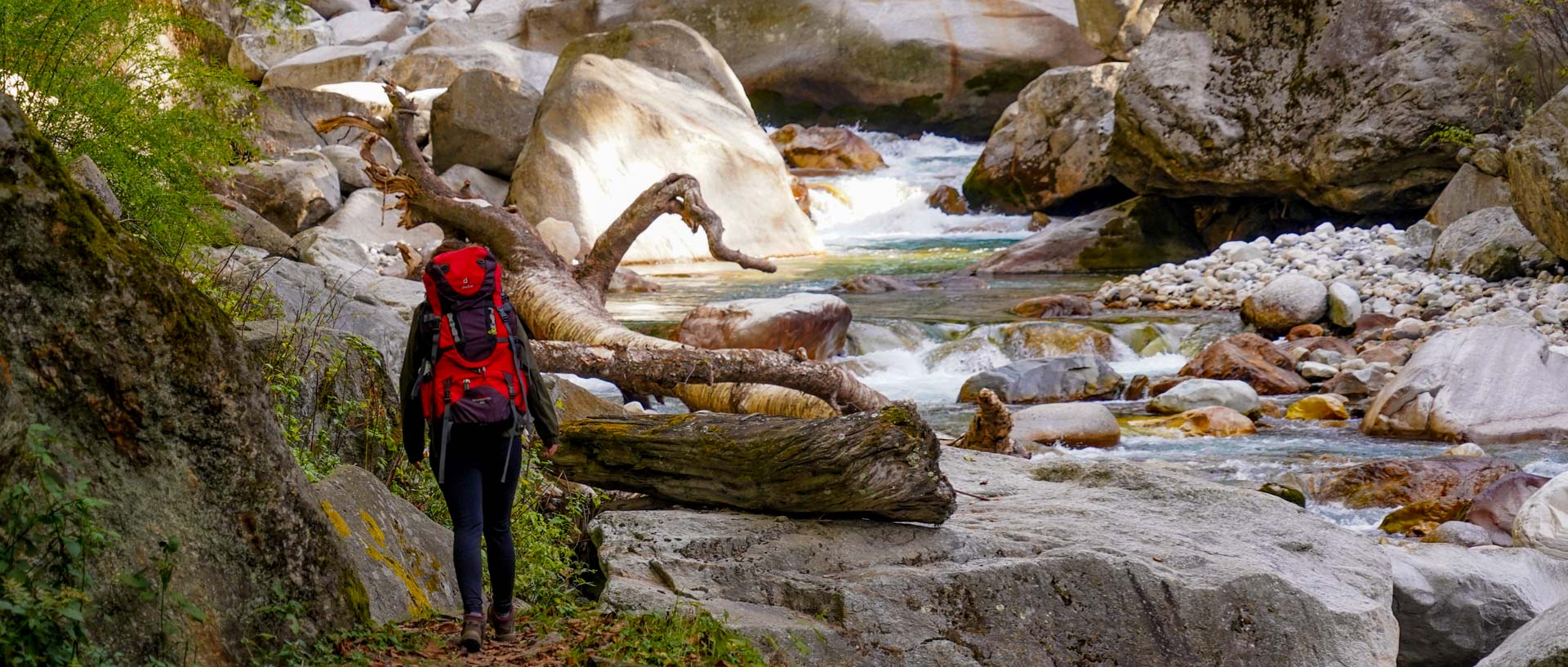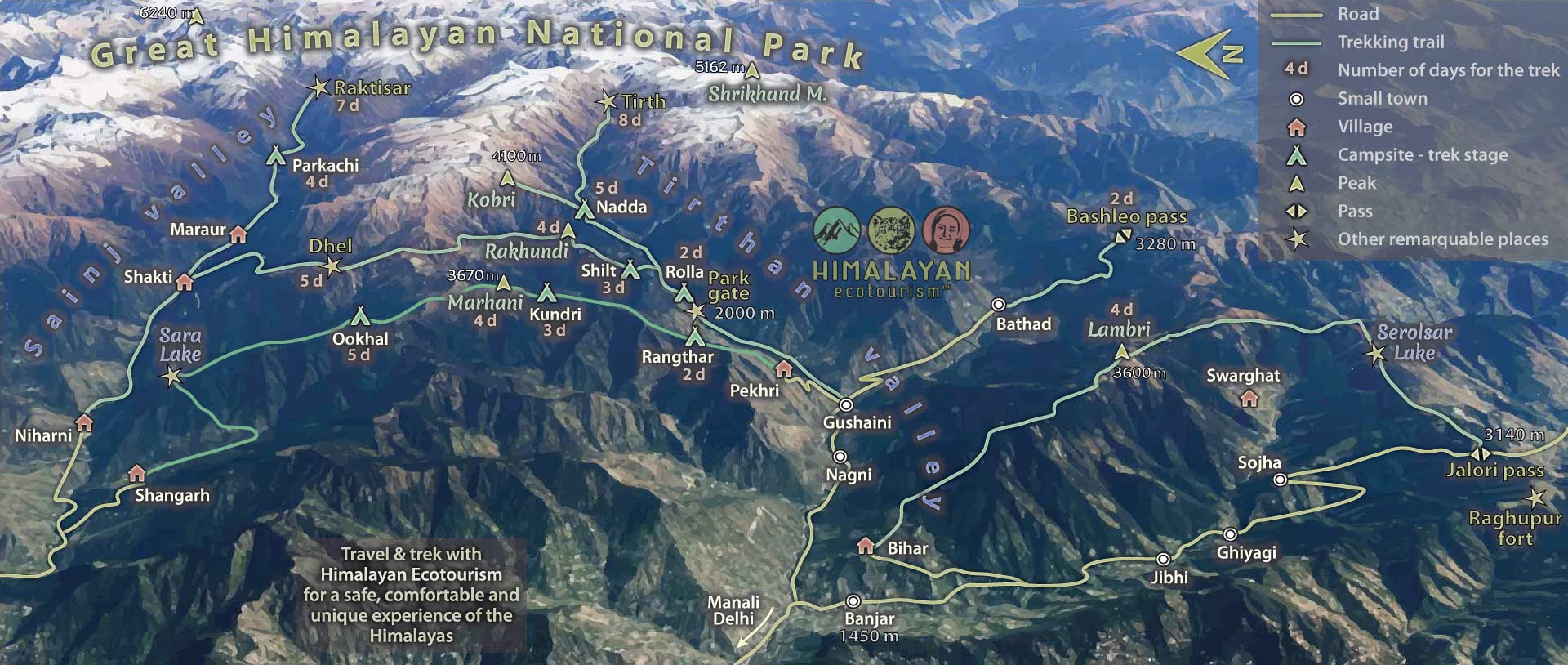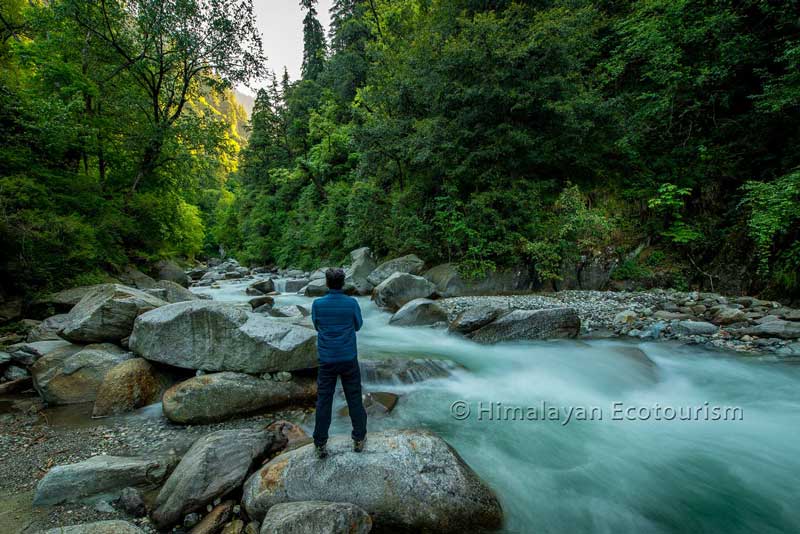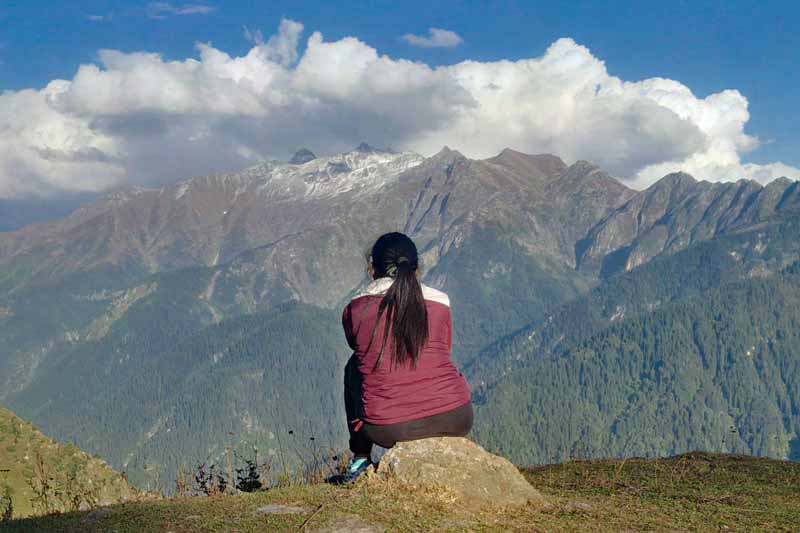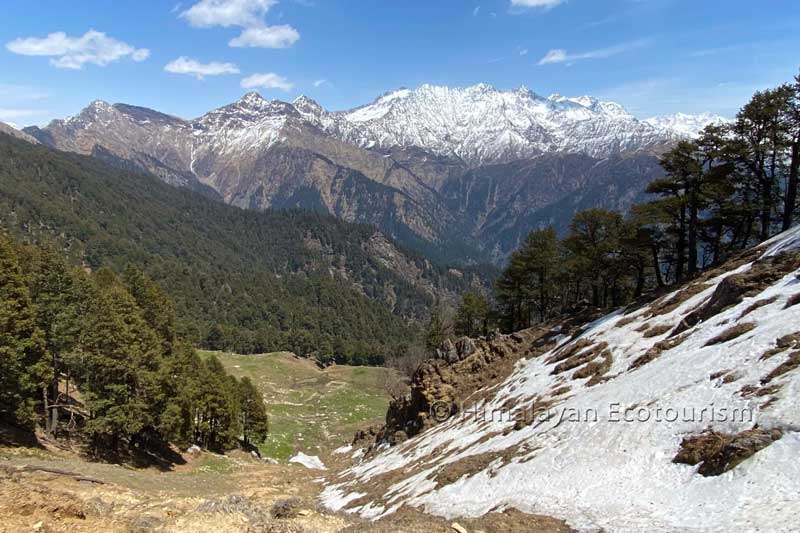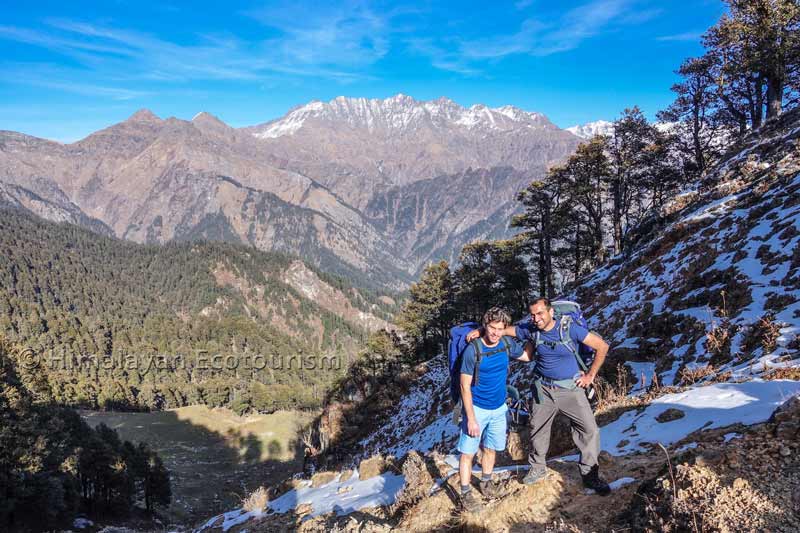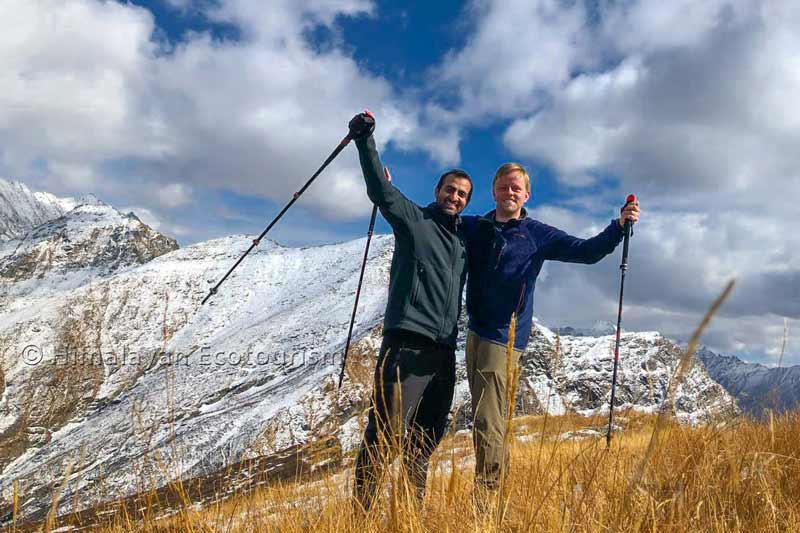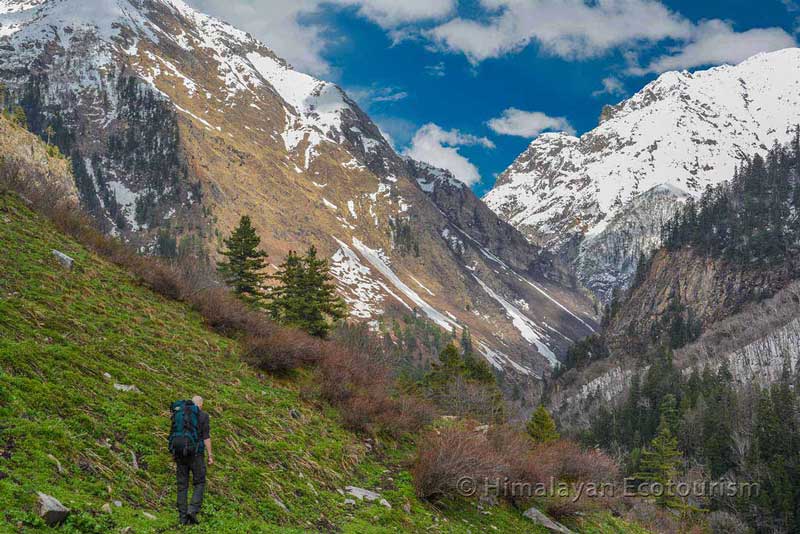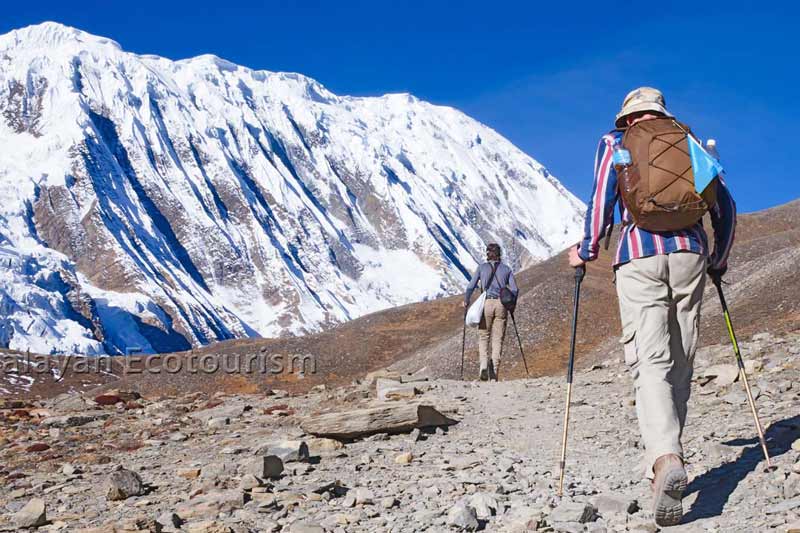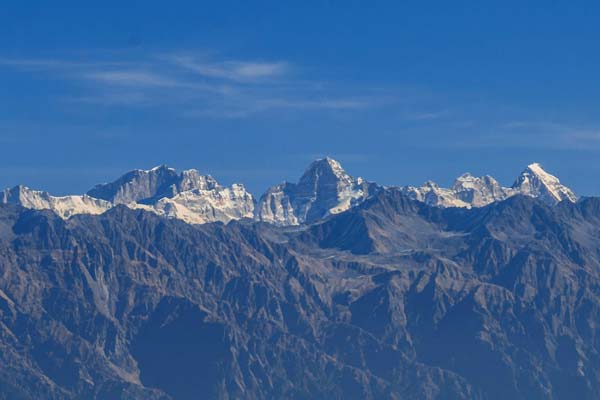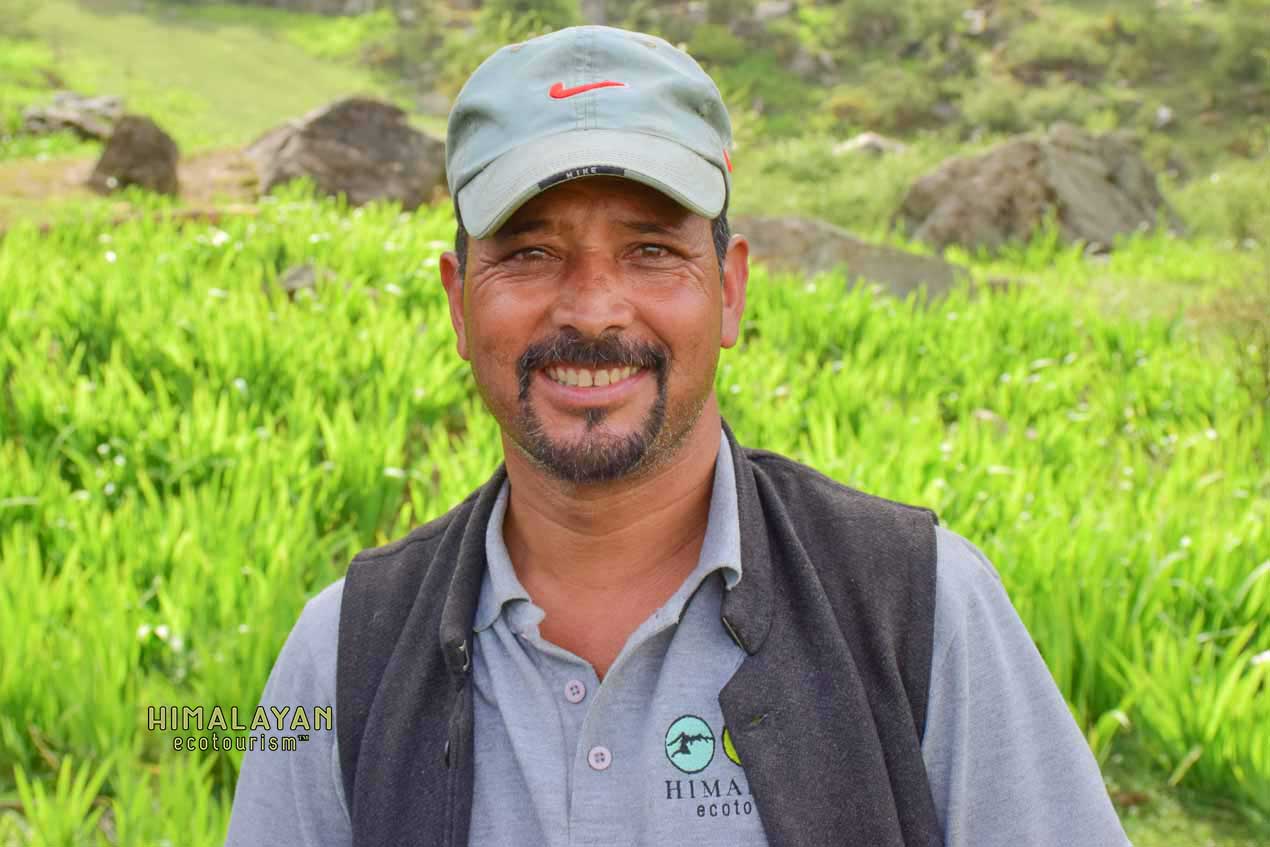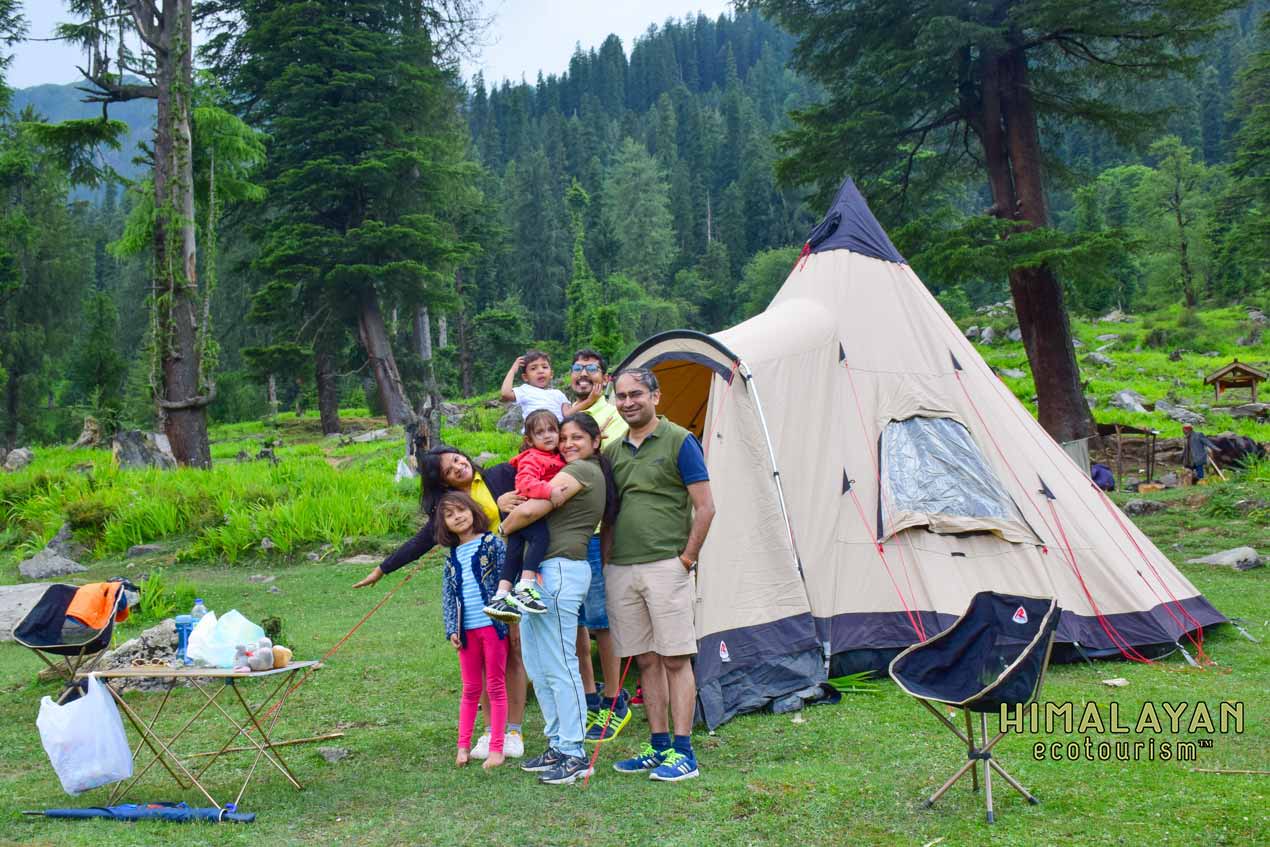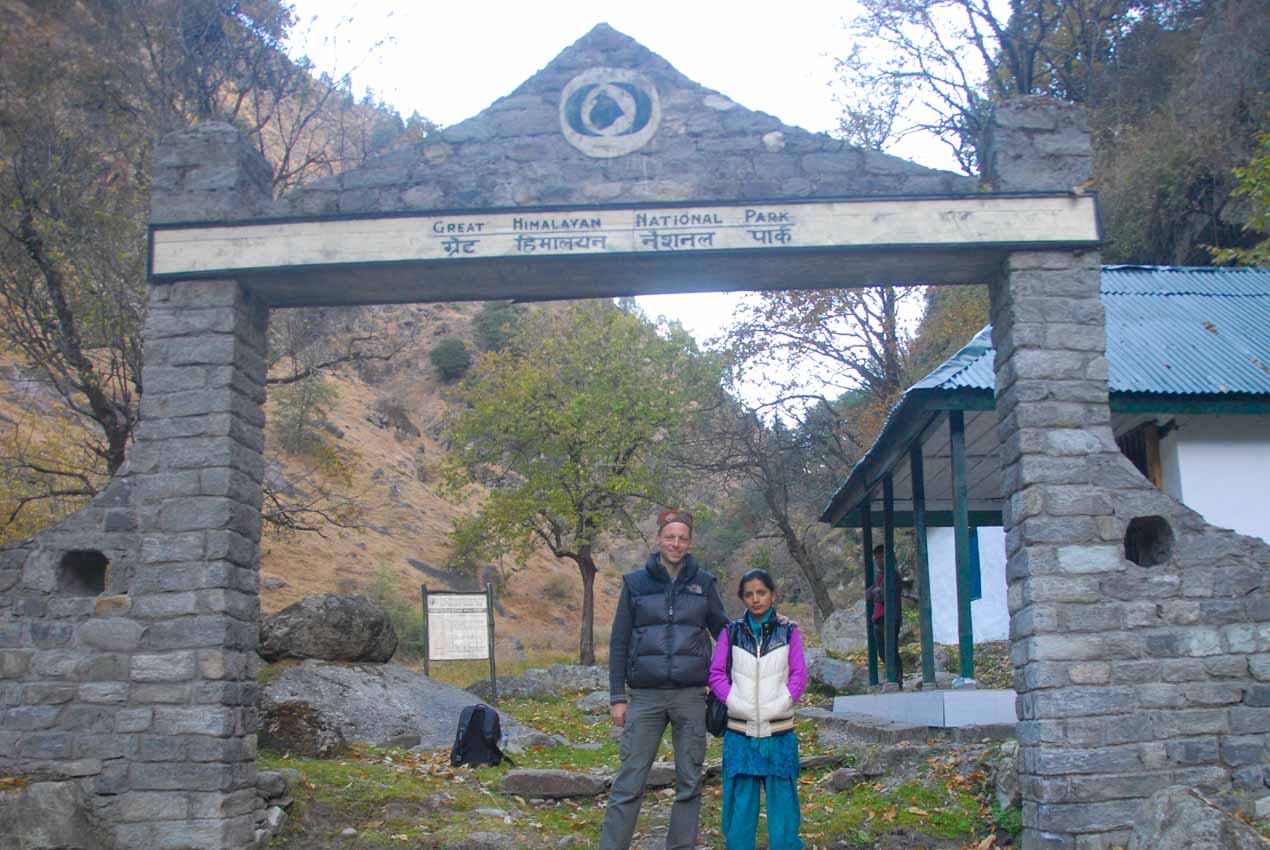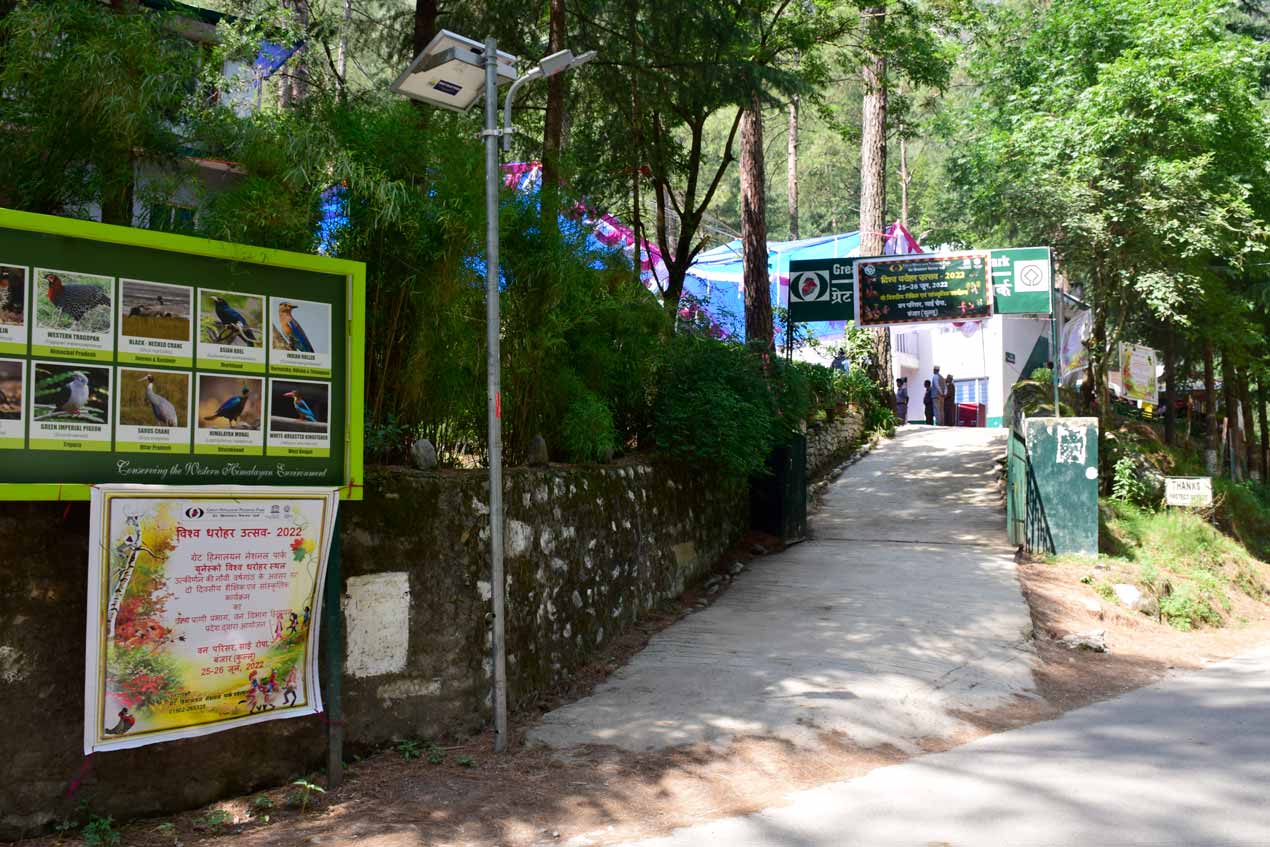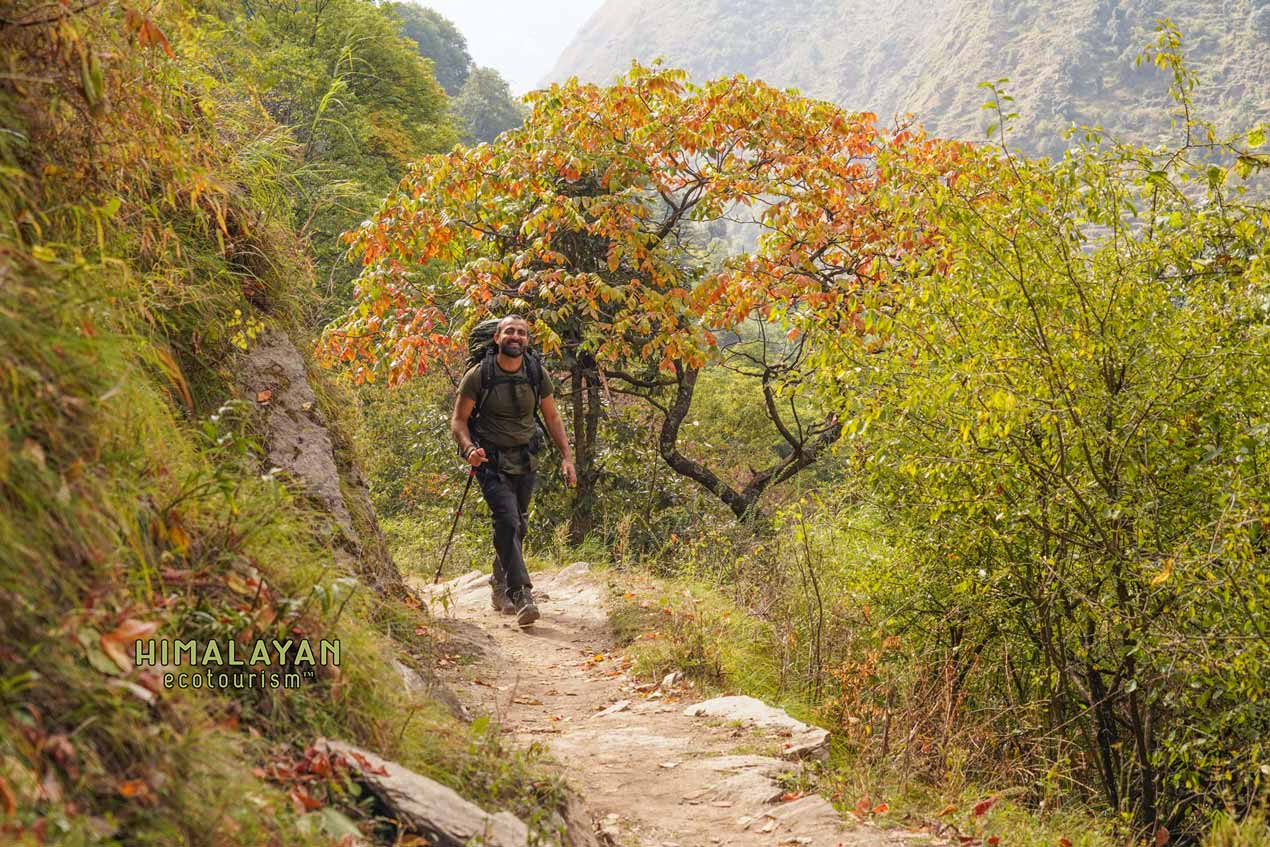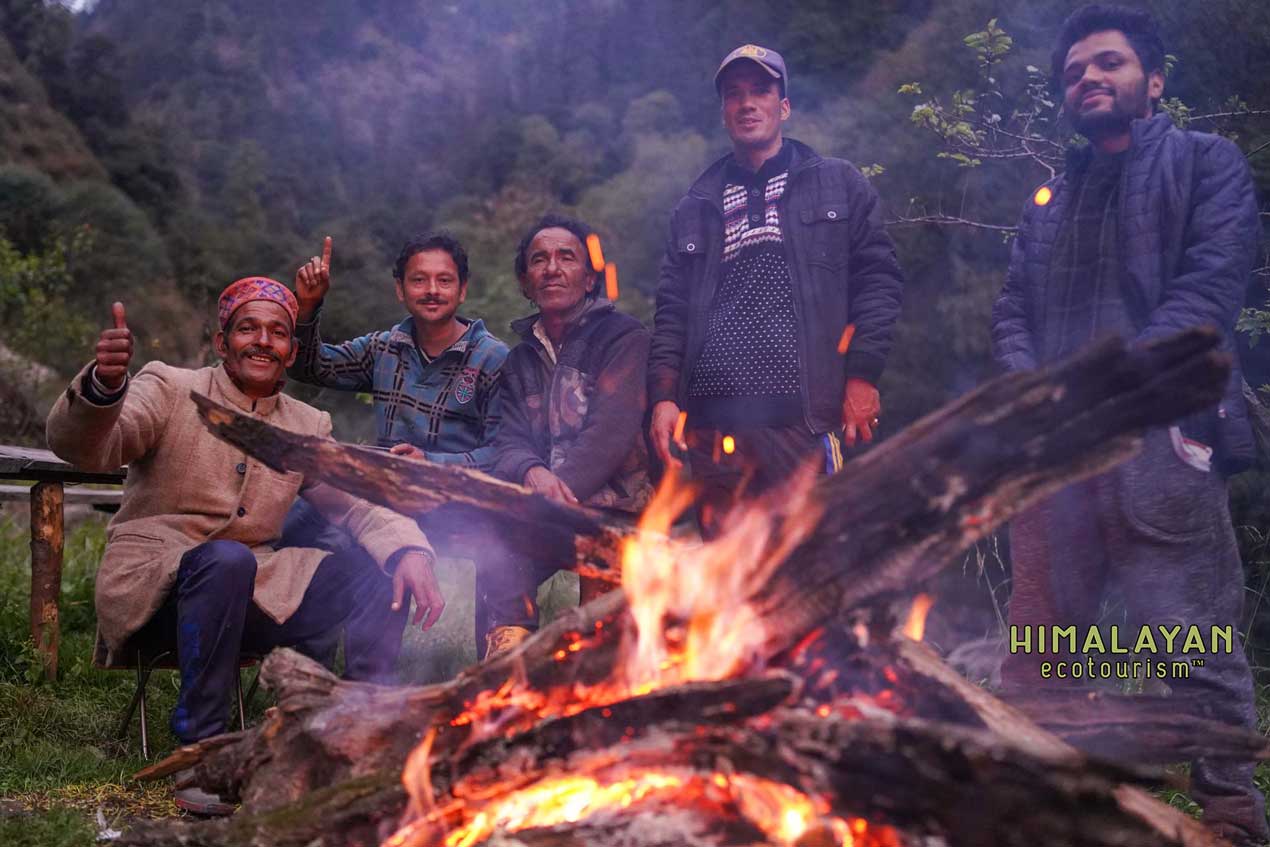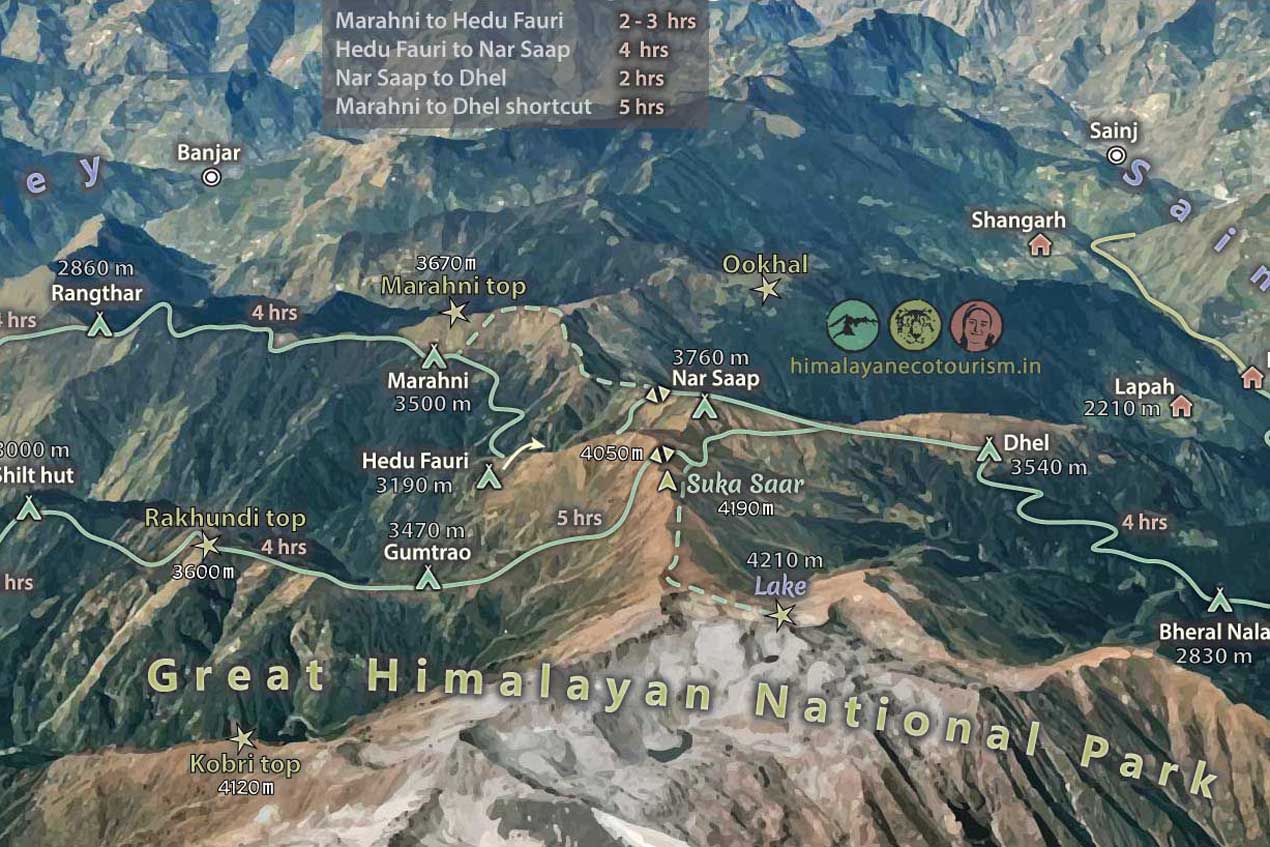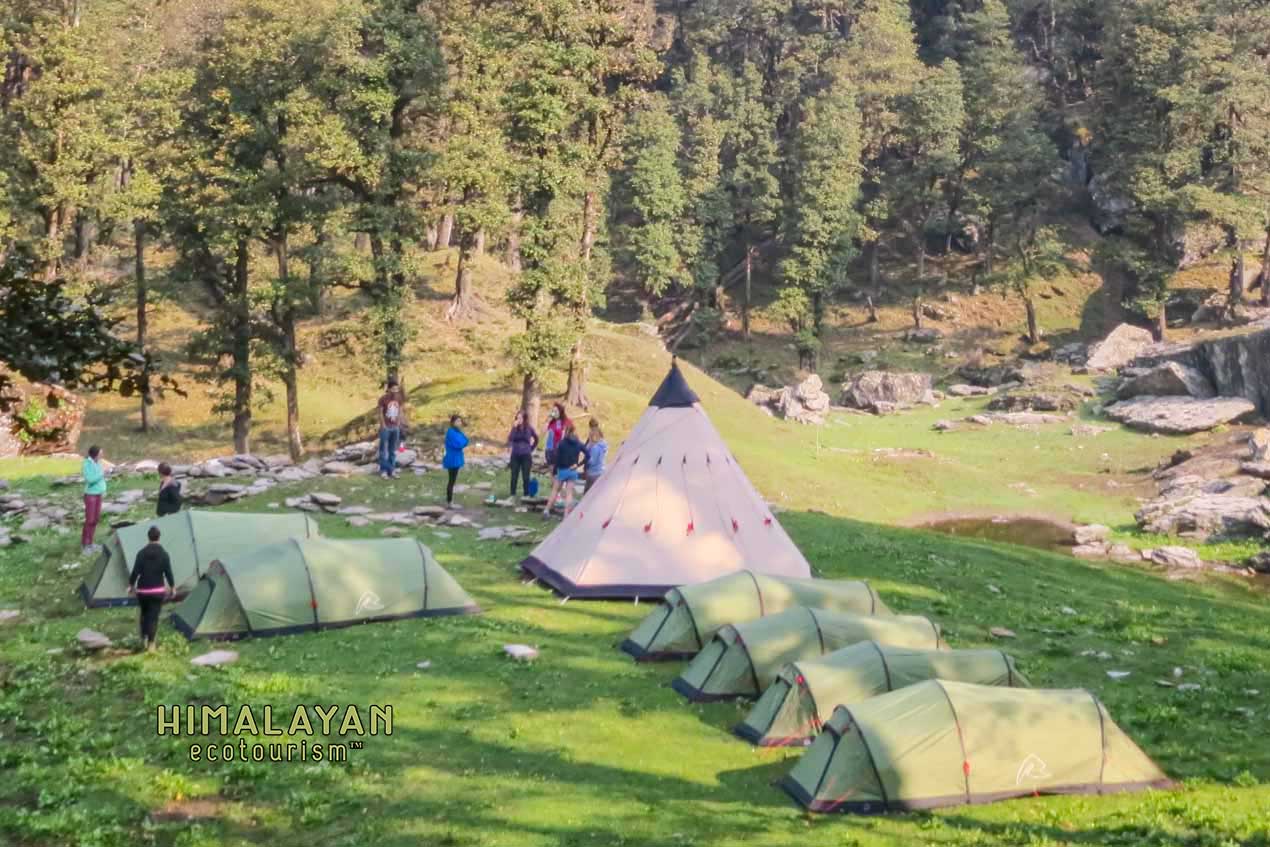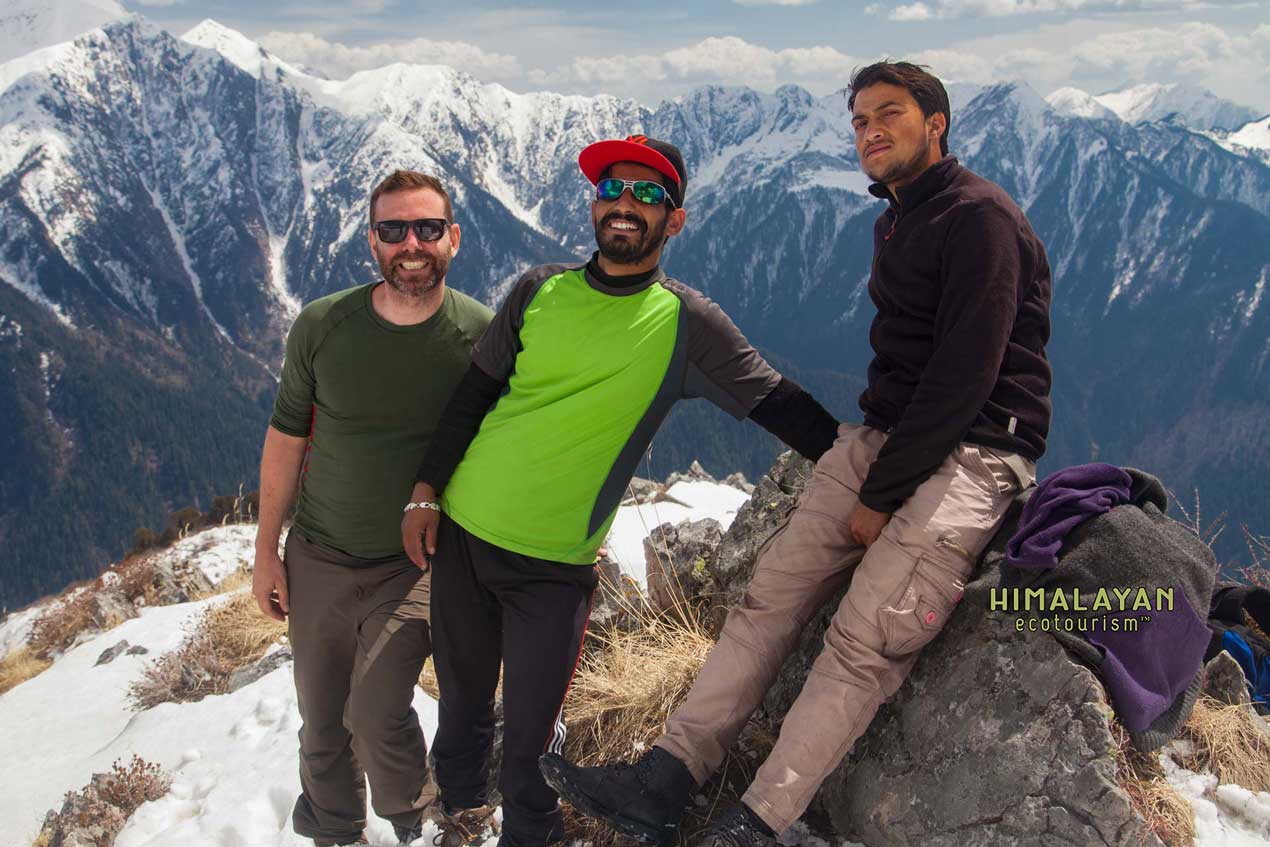Treks in the Great Himalayan National Park
Treks inside the Great Himalayan National Park
Treks around the Great Himalayan National Park
Info about trekking in the Great Himalayan National Park
Trekking in the Great Himalayan National Park is a must for nature lovers and trekkers.
GHNP is a biodiversity hotspot and a World Heritage Site. Because it is a protected area, there are no roads or facilities within the Park. The only way to explore the pristine wilderness is by foot.
Trekkers are allowed to trek in GHNP with recognised and experienced guides because it is easy to get lost in the Park and to safeguard the flora and fauna within the Park.
We organise multi-day treks in GHNP. Our treks are led by members from our cooperative. A trained guide and his team lead all our trekking groups. Our team ensures the trekkers are comfortable and the wildlife is not harmed.
Apart from their expertise in navigating the trekking trails in GHNP, our team of locals have strong knowledge of the region and will explain the history and formation of the Park and the fauna and flora in the GHNP.
With more than 10 years of experience and many awards in the field of sustainable tourism, we guarantee that travelling with us would be a good choice.
Himalayan Ecotourism invites you to experience the hospitality of the Himalayan people.
Guides for Trek in Great Himalayan National Park
Our trek packages include guides, porters, and a cook. They are trained to handle all the requirements on the trek. As our staff are locals, they are familiar with the terrain and well-informed about the Park and local history, flora, and fauna.
GHNP is a protected area and our staff ensures that the animals found in the park as well as the vegetation remain unharmed during the treks. They follow sustainable practices throughout the trek to ensure minimal disruption to the natural environment.
Our guides who will accompany you on the treks are a part of a cooperative, which is recognised by the Park administration.
Our cooperative has been created to empower the local community and to avoid destructive competition among local guides. The rules are decided by everyone in the cooperative and all members are trained to lead treks, handle equipment, and keep trekkers and the Park safe.
Through this system, our cooperative members enjoy good working conditions and our guests gain a good trekking experience.
Great Himalayan National Park Tour Packages
Each of our treks in GHNP is designed as a package.
When you book a trek with us, it will be inclusive of the trekking equipment, staff, and food. While on the trek, you will be camping and the tour package includes camping equipment.
We also arrange the trekking permit from the GHNP office, transportation, accommodation, and any other services before or after treks.
While we have set itinerary and fixed dates departures options, they are flexible and we can curate your trip to the Great Himalayan National Park based on the experience you would like. We can recommend and plan the trek based on preferences and interests such as bird watching, wildlife spotting, adventure, or photography.
We also take into consideration the safety aspects of the trek in our tour packages. While we would like you to experience the adrenaline rush that comes from being out in the uninhabited forests and conquering summits, we ensure that you remain safe by choosing the best trails, camping sites, equipment, and weather conditions for treks.
Let us know what you would like as an experience and we will curate your trip to the Great Himalayan National Park for you.
Great Himalayan National Park Trek Permit
The GHNP administration charges a fee per day for trekking in the Park. The fees are collected before trekkers can enter the Park for any trekking activity. This is part of an effort to maintain the Park where commercial tourism is not encouraged and is prohibited in order to safeguard the natural environment.
The funds help pay for the staff and for the maintenance of the trekking trails, which tend to get damaged during landslides in the monsoon and because of fallen trees. The trekking fees for GHNP treks are also used to maintain the bridges over rivers that may be worn out.
Conservation work is crucial in the Park, which is renowned for its biodiversity. The Park administration uses the funds to support other tasks such as preserving wildlife, identifying species, counting birds, and setting up camera traps to collect information.
The entry fee is calculated per day of trek as follow :
- Indian national : 400 INR per day
- Foreign national : 800 INR per day
- Indian student : 250 INR per day
- Foreign student : 500 INR per day
- Per tent : 100 INR per day
Great Himalayan National Park Office
Since its recognition as a national park and a UNESCO World Heritage Site, the Great Himalayan National Park Conservation Area has been protected from development. Hence, there are no roads or villages within the Park limits. Grazing, tree cutting, and hunting are not allowed in the forests. This ensures that the biodiversity hotspot, known for its rare and endemic flora and fauna, is undisturbed and left in its pristine state.
The Park’s care and protection is overseen by the GHNP office which is located in Sai Ropa. This is where trekkers can get the permit. A permit is necessary to trek in the Park and only a set number of permits are issues each year to avoid overtourism and any damage to the Park. The office offers visitors introductory nature walks but you will not be going deep into GHNP. The office also includes an arboretum with a variety of trees that are representative of the species found in the Park.
The office offers visitors introductory nature walks. The office campus also includes an arboretum with a variety of trees that are representative of the species found in the Park.
Contact us for organising your trek, we will arrange the permit for you. We will include the trekking permit fee in your tour package.
When to Trek in the Great Himalayan National Park
You can visit the Great Himalayan National Park anytime but the best time to trek in the Great Himalayan National Park is from April to June and September to November.
The visual experience of your treks will change depending on the season. During summer, you will witness fresh blossoms and vibrant greens. It is also a good time to spot wildlife in lower altitudes. In autumn, the broadleaf trees begin to turn, so you will see the forests looking splendid in reds, yellows, and oranges. The weather too is pleasant in the mountains during summer and autumn.
We avoid trekking in GHNP during the monsoon as the trails are overgrown and wild animals like bears could be found hiding in the grass. Landslides are also common in the region at this time of the year and the trails can be slippery.
Winter too is not the best time to trek because of the extreme cold and snowfall. However, shorter treks along some trekking routes can be organised in winter when the beauty of the western Himalayas takes on a magical quality with snow-draped deodars and mountain peaks.
What To Do in Great Himalayan National Park
The Great Himalayan National Park is a biodiversity hotspot known for its sublime mountains and forests. Trekking is the best and the only way to experience GHNP.
Trekking the trails through forests and powering your way to reach the summits is an adventure in itself.
Your GHNP trekking experience also includes camping in wilderness, cooking outdoors, and enjoying bonfires.
The treks are good for photographers as each trek in GHNP guarantees scenic views and each season offers a different visual experience of the mountains and forests. There are many endemic and rare birds in GHNP and bird watchers will be busy spotting various species.
We recommend you bring your binoculars on these treks. You will also encounter diverse fauna and flora. Our guides can help you identify the various plants and trees that you will see here. You will also learn about the local culture and history.
See here what you can do around the GHNP in the Tirthan valley.
Great Himalayan National Park Trek Itinerary
You can explore each GHNP trek itinerary on our website to learn more about it.
Each Great Himalayan National Park trek itinerary includes a map, a detailed description of the trekking experience, trekking time between points in the itinerary, camping sites, elevation profile of the trek, and difficulty of the trek based on technical and fitness levels.
The trek features highlight the duration, altitude, and difficulty of the trek. The map will guide you from the starting point of the trek to the end and also shows the roads and trails you will be using, walking time, towns and villages en route, campsites, peaks and passes, and other interesting sights that you will be encounter on this trekking route. The elevation profile shows the ascent and descent of the treks and how much climbing you can expect.
You can also find the day-to-day itinerary with options and the highlights of each trek to help you decide the best one for you.
Great Himalayan National Park Trek Cost
As our treks are designed as a package, the Great Himalayan National Park trek cost will include the rent of equipment, wages of staff, food, and a small fee for supporting our reforestation project.
Our reforestation project aims to empower local communities economically while protecting forest cover through the plantation of native trees and their maintenance. By contributing to the program, you will be giving back to the local communities here and supporting sustainable tourism.
We do not include travel insurance in our trek costs but we can guide you on how to get travel insurance if required.
Our treks are made for the budget-friendly trekker as well as those looking for a more comfortable experience.
The trek costs vary according to preferences and we arrange the food and quality of equipment accordingly.
We have multiple options in equipment such as the type of tent, sleeping bags, mattresses, camping furniture, and other gear such as outdoor BBQ, walking poles, and baby carriers.
The GHNP trek cost is structured flexibly and you can discuss your requirements with us on email or phone and we will give you a quote based on your requirements. You can see in details all the equipment available for your trek here.
List of Treks in Great Himalayan National Park
When planning the treks in GHNP, our team explores the Park and identifies the best routes and camping sites so that trekkers experience the best of GHNP.
We have a diverse list of treks in Great Himalayan National Park. These are some of our current multi-day treks in GHNP. You can explore each trek page on the top of this page to know more.
- Rolla Trek
- Rangthar Trek
- Shilt Hut and Rakhundi Trek
- Marahni and Kundr Trek
- Ookhal Trek
- Dhel Trek
- Raktisar Trek
- Nada, Kobri, and Tirth Trek
- Pin Parvati Trek
- Lambri Trek
- Sara Umga Trek
- Jalori Pass Treks



